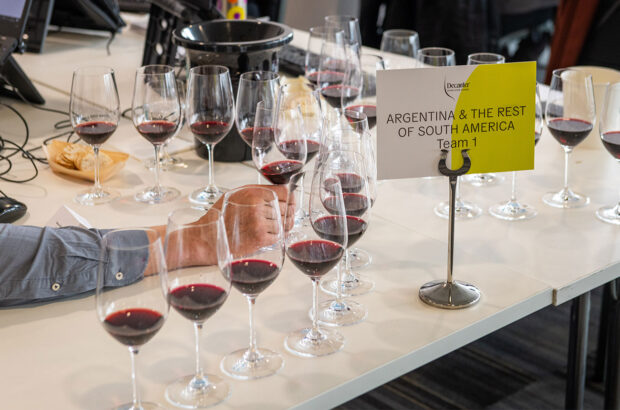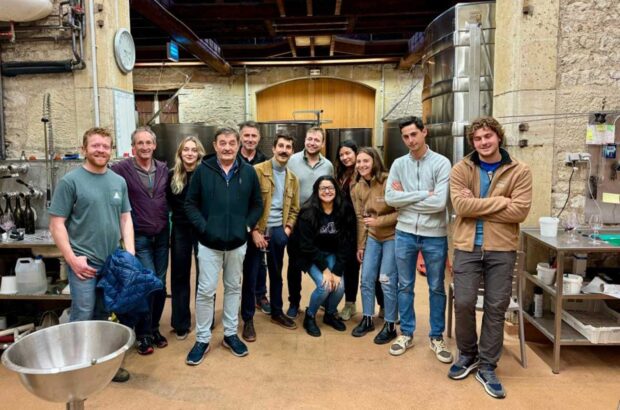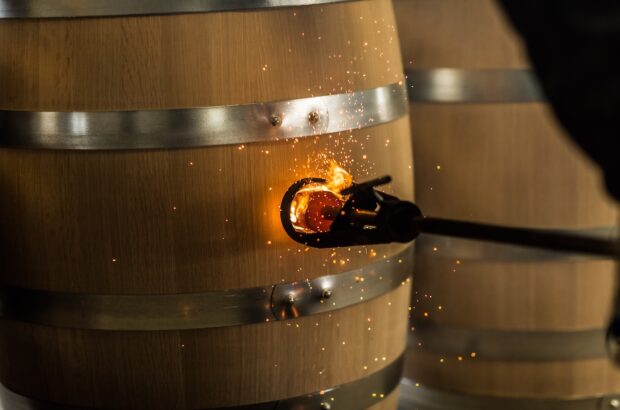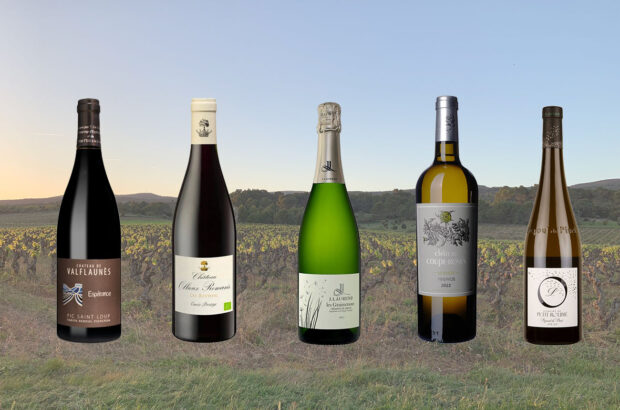Revamping an icon
Natalie Earl
Is there a more recognisable bottle design than Perrier-Jouët’s Belle Epoque? Today, more than 120 years since its conception by French artist Emile Gallé in 1902, it has lost none of its lustre; the looping stems of white anemones, outlined in gold paint, with that endearing handpainted look, continue to conjure up images of fin-de-siècle decadence. Celebrating last year’s milestone, Perrier-Jouët has launched a special-edition bottling of its Belle Epoque 2013 (£220 Millésima), designed by Austrian duo Katharina Mischer and Thomas Traxler. While it doesn’t have quite the same impact as Gallé’s design, it treads the same nature-inspired ground.
At the launch, Séverine Frerson, cellarmaster since 2020, said: ‘Florality is the pillar, the DNA of the history of the house.’ Frerson, who describes herself as a tactile person and puts much emphasis on the texture of the wines, has already begun to apply her own flair to the Belle Epoque releases, by changing up the dosage liqueur. Here, the liqueur contains a barrel-fermented Chardonnay, from two small plots in grand cru Cramant – Bouron Leroi and Bouron du Midi – which she said has altered the texture
of the final wine, making it ‘like velvet, very silky and comfortable’. Indeed, it makes for a pleasurable sip.
The magic of Riesling
Amy Wislocki
It has become a cliché, the esteem in which Riesling is held by members of the wine trade. I was recently the honorary journalist among a group of sommeliers who gathered at London restaurant Frog by Adam Handling, for a tasting lunch featuring 12 Rieslings from six producers, spanning vintages from 2005 to 2021. It was organised by Stefan Neumann MS to commemorate last year’s 175th anniversary of Australian Riesling specialist Pewsey Vale. Neumann consults for Pewsey Vale’s UK importer Fells, which also brings in the wines of Alsace’s Hugel, so we enjoyed four vintages from each of those two estates, alongside two Rieslings from Germany (Bürklin-Wolf in the Pfalz, Heinrichshof in the Mosel) and two from Austria (Weingut Bründlmayer in Kamptal and Domäne Wachau).
Demonstrating the incredible staying power of Riesling, the Pewsey Vale, The Contours Museum Release 2005 (2007 vintage available from Wine Republic, £29.95) was a standout: unbelievably youthful for a wine of this age; saline, mineral and limey, with a hint of camomile. Tight and fresh, it’s a wine that isn’t tiring, and I didn’t find any kerosene or petrol characters. It was interesting to note Neumann’s comment that many Australian producers dislike these descriptors, preferring ‘clove oil’ instead. Not sure that will catch on…
New from Nova Scotia
Tina Gellie
Leading Canadian sparkling winery Benjamin Bridge (UK importer: Flint Wines) has long flown the flag for the maritime province of Nova Scotia – but it now has company. Sherborne-based Propeller is importing still and sparkling wines from biodynamic-certified Lightfoot & Wolfville. While the Nova Scotians are excited we get our first taste of Tidal Bay, its unique appellation created in 2012, the style may take time to find the popularity it enjoys domestically. Despite its name, Tidal Bay is not a place but a crisp, aromatic, low-alcohol blend of up to 15 white grapes (L’Acadie Blanc and Geisenheim 318, anyone?) that must display its ‘Nova Scotianness’ for appellation approval.
At a tasting of 33 of the province’s wines in March, Lightfoot & Wolfville’s Tidal Bay 2021 (£19.95 Propeller) was the best of its kind, with lemon sherbet and sea spray notes. Better still was its Flora 2021, a similar Germanic-style white but with racier acidity and less residual sugar. And as excellent as all its traditional-method sparklings are, Flint Wines needs to stock Benjamin Bridge’s Piquette 2021. Bone-dry, 5% alcohol and like hoppy, citrussy, grapey, salty ginger beer – in the best way. Is it wine? Who cares! It’s the ultimate sustainable summer refresher.
Amarone, but not as you know it
James Button
Any chance to taste Romano Dal Forno’s wines should be grasped with two hands. With wise words from ‘the master’ Giuseppe Quintarelli (who died in 2012) ringing in his ears, Romano set about producing his own vision of Amarone. ‘Meeting Giuseppe Quintarelli changed my father’s view of his work,’ said Romano’s son Marco, during a tasting hosted by UK importer Pol Roger. The tasting included three vintages of Monte Lodoletta Amarone – 2017, 2010 and 2004 – as well as the final vintage, 2004, of the estate’s sweet wine Vigne Seré.
Marco embarked on a new project in 2015 to use the grapes previously used for Vigne Seré to make an Amarone Riserva (or possibly an IGT…). While the ‘standard’ (it’s anything but) Amarone is 100% new oak barriques, this wine will be aged for 15 years in 20hl botti, then three years in bottle. The results are bound to be exceptional. In the meantime, Monte Lodeletta will do just fine: 2017’s youthful cocoa and coffee bean profile is smooth and glossy (£216ib Lay & Wheeler); 2010 is bold and medicinal with hedgerow berries, dried fruit overtones and a depth of cocoa and wood (£400 Hard to Find Wines); 2004 – ‘one of the best vintages ever’, said Marco – has Parma violets, sweet earth and black cherry giving way to dark chocolate, Guinness and balsam on a smooth, almost ethereal palate, with a minty tone and a coffee, spice and curranty finish.


Translating Argentinian terroir
Julie Sheppard
It was a treat to talk terroir with one of South America’s top viticulturists. Edy del Pópolo is known for his work with winemaker David Bonomi; the duo are custodians of PerSe, high in the foothills of the Andes, named one of the world’s 12 greatest vineyards by Decanter (December 2022 issue). Also viticulturist for Susana Balbo Wines, he discussed the evolution of the winery’s high-altitude vineyards in Uco Valley, following a move away from planting on the valley floor two decades ago. A philosophy of ‘making wines in the vineyard’ translates into distinctive bottles such as the mineral-driven Ben Marco, Sin Límites Chardonnay 2022 (92 points; 2021, £21 The Wine Society); ‘there’s something in Gualtallary that gives a salinity to these wines,’ explained del Pópolo. ‘The fine-grained chalky texture is the signature of Gualtallary,’ he added as we tasted Ben Marco, Sin Límites Malbec 2021 (93pt, £29.50 The Great Wine Co). Finally, showcasing the elegance of Paraje Altamira, the assured Nosotros, Single Vineyard Malbec 2019 (96pt, £100 Wine Direct). ‘2019: the best vintage I’ve ever had,’ said del Pópolo, who predicts this wine will develop over the next 20 years.















